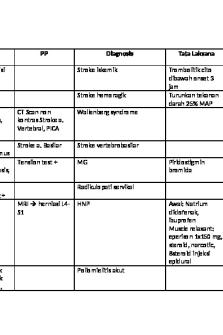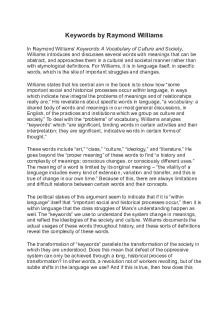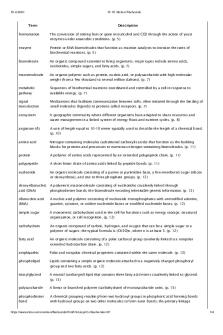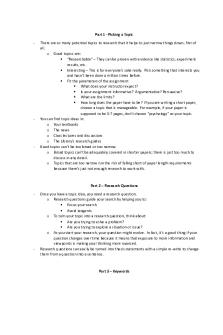Romanticism- Keywords PDF

| Title | Romanticism- Keywords |
|---|---|
| Course | Letteratura inglese I |
| Institution | Università degli Studi di Trento |
| Pages | 3 |
| File Size | 123 KB |
| File Type | |
| Total Downloads | 39 |
| Total Views | 142 |
Summary
Download Romanticism- Keywords PDF
Description
ROMANTICISM: KEYWORDS-FREDERIK BURNIK 1.GOTHIC -Originally referring to the Germanic tribe of Goths acquired additional meanings: (1) the pointed arch style of architecture introduced in the twelfth century; (2) the black letter font in printing; (3) writings belonging to, or imitating the style of, the medieval period.
-As a literary style it was broadly scorned as semi-literate, monkish, or barbarous -The first to advance the Gothic as a literary mode Horace Walpole 1764 The Castle of Otranto: A Gothic Story. the term Gothic implicated a generic imitation of medieval romance and the superstitions of a bygone era. -the Gothic portrayed an older world, once rich and thriving, now corrupted, decadent, falling into ruin. - the Gothic necessary fictional distance to expose the unspeakable crimes - For many women writers of the Romantic era the Gothic settings were transparentThe depiction of degenerate male villains, guilty of greed, lust, and cruelty, coincided with recurrent domestic conditions readily recognized by the female readers the fantasy of haunted castles masked but did not impede the realistic description of the cruelty suffered by many women in their own homes. Xes. Mary Wollstonecraft in Mary: A Fiction (1788) -The settingtypically in a dark forest, a castle or the Gothic ruins of an abandoned abbey. - The plot, not rigidly formulaic, often concerned the fate of a virtuous young maiden under assault by a lecherous guardian or corrupt monk. -Motives for the assault financial as well as sexual, involving a secret dowry or inheritance. -The villain has the assistance of an older woman who resents the heroine’s youthful beauty and thinks to gain favor as loyal accomplice. -The hero is both courageous and virtuous, willing to brave dangers in order to rescue the young maiden. - the supernatural element,arising from hell, from the tomb, or from the mind of one of the charactersEven if the ghost or demon is only imagined, the supernatural infuses its psychological charge of horror and dread into the shadows and dark corners of the Gothic setting. -Gothic melodrama gained considerable success on the stage music, mime, and spectacular stage effects for the super natural apparitions. - contemporary lifethe melodrama o found a suitable site for horror in the country inn, where a villainous or insane landlord could drug his guests, slit their throats, or abduct helpless maidens.
2. MONSTERS -The monsters created by the Romantic imagination were modeled after the creatures of age-old superstition and folklore the ghost, the vampire, the werewolf, the witch, the revenant, and creatures conjured or humans transformed by occult powers. - Monsters proliferated in response to the increase in foreign immigration, urban crime, and the fear of “unholy” scientific research. -new monsters the mummy, the alien, the zombie -The ghosts heritage from the Shakespearean ghosts of Hamlet, Macbeth, and Richard III metaphorical resilience as tokens for the fear of death or divine retribution. -the vampire of the Romantic era is distinguished primarily by his aristocratic status (blood-
suckers of the aristocracy) - the werewolf were more prevalent in regions where wolves roamed in marauding packs (Eastern Europe lycanthropy was more fanatically persecuted than witchcraft.) The most popular werewolf of the stage was an adaptation of “Little Red Riding Hood” - the zombies the monsters generated by the circumstances of the time intensified guilt, grief, and fear of death and were most often directed against cruel plantation owners. - the resurrected mummy did not assume its role as monster until later in the period 1. the Napoleonic campaign in Egypt (1798– 1801) and the ransacking of Egyptian artifacts/ 2. discovery in 1799 of the Rosetta StoneThe great fascination in England was the Egyptian cult of the dead and the remarkable preservation of the mummiesThe fantasy of the mummy reanimated was promptly absorbed into the literature. bringing the dead back to life with the ancient past - Extraterrestrial aliens A rare instance of in the literature of the period - mere mortals perverted by demonic agency more frequent among the monsters of Gothic fiction
3. PICTURESQUE - meaning “like a painting” or “suitable for painting,”the term gained currency in the eighteenth century travelers on the Grand Tour acquired more resonance in aesthetic discourse to standards and rules of art. - An ekphrastic mode of nature description prominent among Romantic-era authors Ann Radcliff The Mysteries of Udolpho describes landscapes
-The picturesque involved not only art imitating nature, but also nature imitating art. - the picturesque between the ideals of beauty and sublimity -Coleridge’s interest in the picturesque Beautiful =“When this perfection of form is combined with pleasurableness in the sensations excited by the matter or substance so formed.”/ Picturesque = “When the Parts by their harmony produce an effect of a Whole, but there is no seen form of an Whole producing or explaining the Parts / Sublime = is the experience of “Unity as boundless or endless” the objects serve only to mediate the sublime -The landscape induces a varying psychological response with smooth scenes of calm juxtaposed to rough scenes of tempest - the meaning of the picturesque shifted applied in varying contexts and changed with the tastes of the times. - For many readersinitiation into the picturesque and the aesthetics of landscape will come through the novels of Jane Austen xes. the discussion between Marianne and Edward about the picturesque in Sense and Sensibility xes. her discrimination of consciously beholding in Mansfield Park
4. PROMETHEUS -Prometheus, one of the Titans of Greek mythology, created man from clay and gave fire to mankind defies Zeus who sentenced the Titan to be bound forever to a rock, where each day an eagle would devour his liver, which regenerated only to be eaten again. - Prometheuschampion of mankind, agent of human progress, and defiant rebel against the gods suited the concerns of revolution and Romanticism. - Tale was adapted by Goethe, by Blake, Byron and Mary Shelley In Shelley’s version he gave mankind language -Mary Shelley radically alters the myth in her short novel, Frankenstein: or The Modern Prometheus (1818) She develops the role of Prometheus as the creator of man and as the firegiver. -The subject of the creation of life by a scientist Victor Frankenstein’s exclusively male usurpation
of the procreative act is only the point of departure. -The major focus is on Victor’s abrogation of all responsibility for nurturing and educating the creature that he has brought to lifeHe is a father figure much like Jupiter in Goethe’s poem. -Mary Shelley has disassembled and distributed the consequences result paradoxical disassociation and shifting of sympathies in which the monster is more human than his creator more lovable than his creator and more hateful, more to be pitied and more...
Similar Free PDFs

Romanticism- Keywords
- 3 Pages

Keywords UKMPPD
- 43 Pages

BUS201 Keywords
- 5 Pages
![[07.1] Live de keywords](https://pdfedu.com/img/crop/172x258/zwrgkope9k31.jpg)
[07.1] Live de keywords
- 82 Pages

Keywords by Raymond Williams
- 2 Pages

Biokemi keywords samlet
- 29 Pages

Topics and Keywords
- 2 Pages

Romanticism: Lord Byron
- 3 Pages

Keywords of art history terms
- 2 Pages

10/20 German Romanticism & Song
- 6 Pages

TFG Citacion y uso de keywords
- 10 Pages
Popular Institutions
- Tinajero National High School - Annex
- Politeknik Caltex Riau
- Yokohama City University
- SGT University
- University of Al-Qadisiyah
- Divine Word College of Vigan
- Techniek College Rotterdam
- Universidade de Santiago
- Universiti Teknologi MARA Cawangan Johor Kampus Pasir Gudang
- Poltekkes Kemenkes Yogyakarta
- Baguio City National High School
- Colegio san marcos
- preparatoria uno
- Centro de Bachillerato Tecnológico Industrial y de Servicios No. 107
- Dalian Maritime University
- Quang Trung Secondary School
- Colegio Tecnológico en Informática
- Corporación Regional de Educación Superior
- Grupo CEDVA
- Dar Al Uloom University
- Centro de Estudios Preuniversitarios de la Universidad Nacional de Ingeniería
- 上智大学
- Aakash International School, Nuna Majara
- San Felipe Neri Catholic School
- Kang Chiao International School - New Taipei City
- Misamis Occidental National High School
- Institución Educativa Escuela Normal Juan Ladrilleros
- Kolehiyo ng Pantukan
- Batanes State College
- Instituto Continental
- Sekolah Menengah Kejuruan Kesehatan Kaltara (Tarakan)
- Colegio de La Inmaculada Concepcion - Cebu




